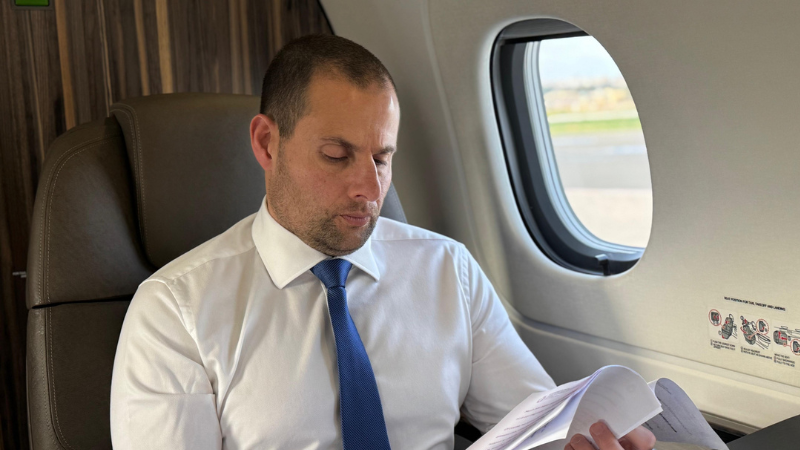I guess you could say Ahmed El Kayel was lucky.
He was dropped at hospital after being shot by Gaddafi loyalists. One of the doctors recognized him and asked the receptionist not to register him as a patient.
When Ahmed woke up after the operation to remove shrapnel from his stomach, that same doctor warned him to act unconscious whenever he heard footsteps approaching.
Ahmed had lost a lot of blood. His arm was a mess, and he points to the staples on his asylum documents to show me how his stomach was held together.
The doctor helped him escape from the hospital in the dead of night. Barely able to stand, he slumped on the back of his cousin’s motorbike and rode to the Tunisian border.
Ahmed had met this doctor years before in a local pastry shop. The man was eyeing a woman at the cake display.
“If I wasn’t married…” he had remarked.
The woman was Ahmed’s sister. Ahmed hit back in anger, and the doctor apologized profusely. He was excused, and the two men became acquaintances, exchanging a nod whenever they happened to meet.
That chance encounter had saved his life.
The four-decade rule of Muammar Gaddafi was marked by fear. Those who dared to speak out against the regime risked torture or execution. That was one of the reasons Ahmed and others took to the streets in February 2011 during what would become the Libyan Revolution.
But the executions, torture and disappearances continued even after the removal of Gaddafi. Regionalism, factionalism and tribalism pitted Libyans against each other in an ongoing conflict that has resulted in too many human rights violations to count.
By 2014, one in five Libyan households had a family member who had disappeared, 11% had a household member who was arrested, and 5% had made reports that one had been killed, according to a study by the Danish Institute Against Torture (Dignity).
Of those arrested, 46% reported beatings, 20% positional torture or suspensions, and 16% suffocation. Some 3%-5% reported having been subjected to sexual, thermal or electric torture.
Ahmed’s neighbour was hanged in the street. Other friends were shot. One of his brothers, a football player, disappeared for a week and returned a different person. He never spoke about what happened to him. Another brother was thrown in jail for five years, during which time, Ahmed explains, “his psychology was broke.”
Ahmed himself lived in hiding. He was the target of more than one attack. His family, fearing not only for him but for themselves, finally pushed him to seek asylum.
This was the Libya that Shoaldeen Ibrahim entered in 2015: a lawless country where armed groups and criminal gangs control of the flow of migrants, “sometimes with the direct backing of Italy and other European countries,” according to the global detention project.
Shoaldeen had left Sudan and set out on a perilous journey across the Sahara desert in a van. Tribal conflict had displaced his people, and he was searching for work to help his family.
I met him at a makeshift club in Hal Far, surrounded by other Sudanese who were playing dominoes and watching TV.
“In Libya there is a lot of suffering,” he said. Shoaldeen was attacked on the street not long after he arrived in the country, and everything was stolen from him.
Without documents, he was put in one of the many detention centres. An internal report published by the UNHCR said that around 4,000 refugees are in the security danger zone in Tripoli or in the north-west. Food and water are scarce. Diseases like tuberculosis are rife. Many people are dying.
While in detention, Shoaldeen was subjected to regular beatings by the guards. He would have died of starvation if he hadn’t manage to flee after two months.
He lived in Tripoli for three years after his escape, in a house with other Sudanese, scraping by on whatever work he could find.
Shoaldeen was one of the lucky ones. He knows others who were kidnapped. Their families were asked to pay a ransom in order for them to be freed. Others were taken by the militias and sold as slaves. Some migrants were even burnt alive after their houses were stormed and ransacked by militias.
“Libya is hell,” he told me.
These statements have been echoed by Amnesty International. The organization has asked the EU to reconsider its support for the Libyan Coast Guard, which “has returned countless migrants and refugees back to Libya where they face arbitrary and indefinite detention, torture, extortion and sexual violence, among other serious violations.”
Shoaldeen never intended to cross the Mediterranean. His plan was to work in Libya until he was able return to his village in the Sudan.
It took him two days to make the journey to Malta, with over 100 people packed onto a small boat. The trip was “more suffering”, but he says he feels safer now in Malta. “There is the law.”
Shoaldeen is still waiting on the outcome of his asylum application. When I ask him what he wants from his future, he tells me that safety is important to him. Safety and education.
As for Ahmed, he has been living in Malta as a refugee since 2015. He dreams of a day when he can go back to Libya to rebuild his home. He imagines a country where people’s rights are respected, and where the ports are open to trade.












